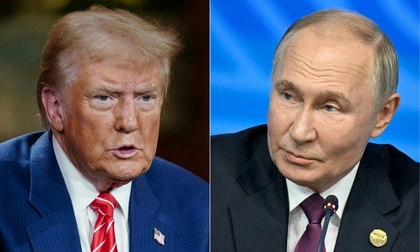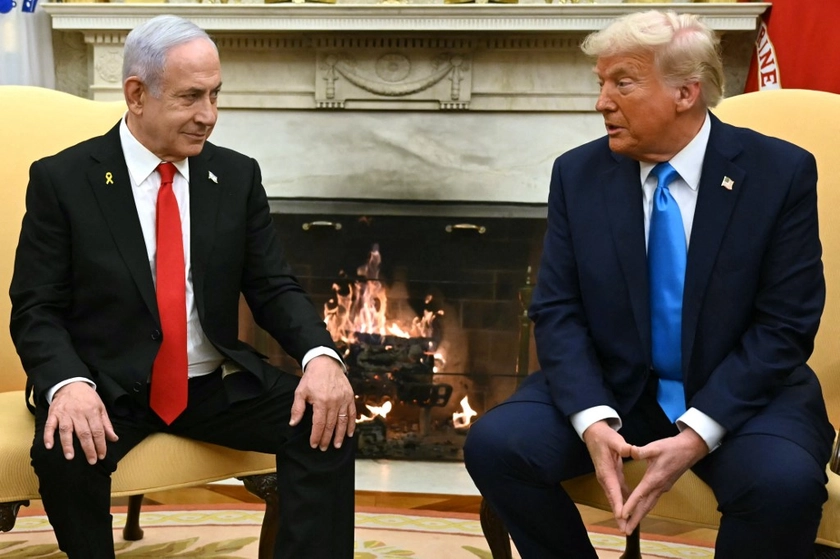Tuareg rebels, a group of indigenous people concentrated in northern Mali, could be seen posing for a photo with a Ukrainian flag that Kyiv Post received from military sources after the rebels’ recent clashes with Malian troops and Russian mercenaries.
In a rare statement, Wagner-affiliated groups on social media admitted suffering heavy losses in the clashes, whose casualties included one of its commanders, Sergei Shevchenko.
JOIN US ON TELEGRAM
Follow our coverage of the war on the @Kyivpost_official.
Ukraine’s Defense Intelligence (HUR) hinted, following the clashes that Kyiv provided “necessary information” to the Tuaregs that “enabled a successful military operation against Russian war criminals.”
However, the clashes also brought the Tuaregs back into the spotlight and highlighted the shaky foundations of peace in North and West Africa that have been largely overlooked – and how Ukraine can play a role despite the ongoing war.
A brief recap of the clashes
Between July 25 and July 27, armed clashes took place between the Tuareg rebels and Malian government forces, the latter augmented by Russian mercenaries, at the border town of Tinzaouaten in northern Mali, near the Algerian border.
The Strategic Framework for the Defense of the People of Azawad (CSP-DPA), an alliance of predominantly Tuareg separatists that calls for the independence of the Tuareg-oriented state Azawad, claimed victory and published videos of dead and captured Wagner fighters.

Russia Presents Demands to US to End War: Capitulation
“Azawad fighters are in control in Tinzaouaten and further south in the Kidal region … Russian mercenaries and Malian armed forces have fled. Others have surrendered,” said the group’s spokesperson.
In one of the videos, a captured Russian mercenary could be seen asking his captors “Can you speak slower?” in Russian.
Al Qaeda-affiliated Group for Support of Islam and Muslims (JNIM) also claimed involvement in defeating the Russian mercenaries after the clashes, with a November 2023 security report claiming that JNIM shared ties with CSP-PSD, CSP-DPA’s predecessor.
However, CSP denied working with JNIM in the latest clashes.
Russian milbloggers affiliated with the Wagner group said at least 20 Wagner fighters were killed in the clashes, with Wagner-affiliated Telegram channels claiming that fighting took place between July 22-27.
Mali’s military junta, who seized government control in coups in 2020 and 2021, rejected claims that Russian mercenaries were present and instead called them instructors training local troops on using Russian weapons.
What’s Russia doing in Mali?
Between 2020 and 2021 a wave of military uprisings swept across West Africa, Mali being one of them.
The military junta, which ousted French troops in the country battling Islamists, sought military and political assistance from the Kremlin, with the latter receiving in return political influence and resources, including access to three gold mines that could help fund its war in Ukraine.
The cooperation led to the deployment of Wagner mercenaries in Mali, whose operations were not officially recognized by the junta, though they have been involved in government operations against separatists and Islamists alike.
In March 2022, Wagner mercenaries, alongside Malian troops, executed at least 500 people during a five-day operation in the village of Moura in central Mali, according to the UN Human Rights Office.
In February 2023, Russian Foreign Minister Sergei Lavrov visited Mali and announced more military aid for the Malian military junta alongside other forms of support.
Who are the Tuaregs?
The Tuaregs are a semi-nomadic group scattered around the Sahara region in North and West Africa, whose population could be found in Mali, Niger, Algeria, Libya, Burkina Faso and Chad.
It’s believed that 950,000 out of the two million Tuareg population reside in Mali.
There are numerous armed groups operating under the banner of Tuareg independence with ideologies ranging from nationalism to extremist jihadism.
The group that claimed responsibility for the attacks on Wagner troops was CSP, an alliance in northern Mali formed in 2021 of Tuareg independentists and Arab nationalists. Al Qaeda-affiliated JNIM also claimed responsibility.
In 2021, one of the groups that formed the CSP vowed to take up arms against Russian troops assisting the government forces. This was followed by escalating clashes in June 2023, during which the Malian troops attacked CSP positions, which led to further CSP retaliations.
The 2023 clashes led to the nullification of the 2015 Algiers Accords signed by the Malian government and Azawad movements, effectively ending the peace deal between the factions.
“For us, this war is existential,” said CSP spokesperson spokesman Mohamed Elmaouloud Ramadane at the time.
“Wagner and the army have adopted a scorched-earth policy against Arabic-speaking and Tuareg communities. They are massacring civilians, destroying our villages and camps, and driving our people out.”
Ukraine’s involvement
Ukraine hinted that it provided the Tuaregs with information, but its involvement might be deeper than acknowledged.
As reported by Atlas News, the photo published by Kyiv Post depicting the Tuareg fighters holding the Ukrainian flag was likely taken in June – before the latest clashes – citing reports by a Tuareg journalist that depicted people with the same attire in his videos.
“My recent visit to Azawad & meeting with Azawad brave fighters. Our fight against Malian, Wagner & terrorists has not yet started,” the journalist said in the captions.
In the photo were also two men dressed slightly differently from the rest of the rebels, with their rifles pointing downwards, as noted by Atlas News. Their attire resembled that of foreign military contractors commonly seen in the Middle East.
A former US military contractor told Kyiv Post that while “it’s hard to tell” their identities due to the blurry nature of the photo, the ones in different attires do appear more pale in skin color than others.
“But ‘contractors’ is a broad term. Many jobs in hostile or high-risk countries are considered contractor jobs. Not all are military based. Just FYI. They could be trainers, advisors, etc.,” he said.
Based on the available information, it’s far from proven, yet possible to speculate that Ukraine deployed military instructors to aid the CSP’s incursion against Wagner. It wouldn’t be the first time Ukraine has been involved in engaging Wagner fighters in Africa.
In May, Ukraine also opened its first embassy in Mauritania, a North African nation northwest of Mali, during which Ukrainian Foreign Minister Dmytro Kuleba said the embassy would “open up numerous additional opportunities: political, economic, trade, and humanitarian.”
Coincidence? Maybe.
You can also highlight the text and press Ctrl + Enter











